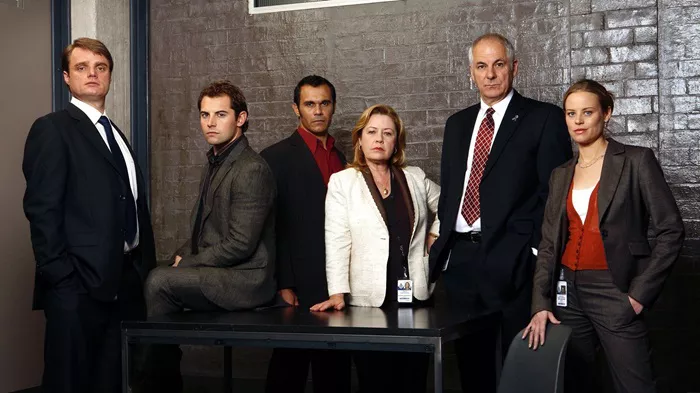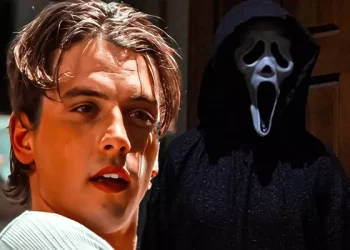“What makes Once Upon a Time in America so good?” This question has echoed through the corridors of cinematic discussion since Sergio Leone’s epic crime drama first graced the silver screen in 1984. As one delves into the layers of this film, it becomes apparent that its brilliance lies in a confluence of factors — from the stellar performances of the cast to the meticulous direction of Leone, and the haunting musical score by Ennio Morricone. This article aims to dissect the elements that contribute to the enduring allure of “Once Upon a Time in America.”
Epic Storytelling: A Tapestry of Time and Place
At the heart of the film’s greatness lies its masterful storytelling. “What makes Once Upon a Time in America so good?” can be answered by exploring how the narrative weaves through time, immersing the audience in the lives of the central characters — Noodles, Max, Patsy, and their gang. The film spans several decades, seamlessly transitioning between their childhood in the 1920s to their adulthood in the 1960s. Leone’s non-linear narrative technique adds complexity and depth, keeping the audience engaged as they navigate the intricate tapestry of time and place.
Character Depth: The Human Element in a Criminal Odyssey
One cannot discuss the film’s brilliance without delving into the characters that inhabit its world. “What makes Once Upon a Time in America so good?” finds an answer in the richly developed characters, each layered with nuance and complexity. Robert De Niro’s portrayal of Noodles and James Woods’ Max are performances for the ages. Their camaraderie, strained by betrayal and loyalty, adds a visceral and human element to the criminal odyssey depicted in the film. The characters’ evolution over the years is not just a visual spectacle but a study in the frailty and resilience of the human spirit.
See Also: Was Star Wars 1977 the First?
Cinematic Craftsmanship: Leone’s Visual Symphony
Sergio Leone, renowned for his work in the Spaghetti Western genre, brought a distinctive directorial style to “Once Upon a Time in America.” “What makes Once Upon a Time in America so good?” is intricately tied to Leone’s meticulous attention to detail and his ability to create visual poetry on screen. The film is a canvas painted with stunning cinematography by Tonino Delli Colli, capturing the grit and grandeur of the various time periods. Leone’s use of long takes, close-ups, and panoramic shots crafts a visual symphony that complements the narrative, making every frame a work of art.
Ennio Morricone’s Musical Alchemy: A Score Beyond Time
In the realm of cinematic brilliance, the musical score often plays a pivotal role. “What makes Once Upon a Time in America so good?” is underscored by the hauntingly beautiful music composed by Ennio Morricone. The score, at times melancholic and at others hauntingly poignant, transcends the temporal setting of the film. Morricone’s ability to evoke emotion through music is unparalleled, and in “Once Upon a Time in America,” his score becomes an integral character, heightening the emotional impact and leaving an indelible mark on the audience.
Symbolism and Allegory: Layers Beneath the Surface
Beneath the surface narrative of crime and friendship, “Once Upon a Time in America” is a film rich in symbolism and allegory. “What makes Once Upon a Time in America so good?” extends beyond the apparent storyline to the layers of meaning embedded in the film. From the recurring motif of the suitcase to the use of opium as a metaphor, Leone infuses the narrative with symbols that invite interpretation. The film becomes a cinematic puzzle, inviting viewers to explore the depths of its allegorical landscape.
Social Commentary: The American Dream and Its Discontents
The brilliance of “Once Upon a Time in America” is not confined to its narrative and visuals; it extends to the social commentary embedded in its core. “What makes Once Upon a Time in America so good?” includes its exploration of the American Dream and its discontents. The characters’ pursuit of wealth and power mirrors a societal obsession that transcends the film’s specific time period. Leone uses the criminal underworld as a lens to examine the fragility of the American Dream, inviting reflection on the cost of ambition and the compromises individuals make in their pursuit of success.
Restoration and Director’s Cut: Reviving a Cinematic Gem
The journey to understanding “What makes Once Upon a Time in America so good?” wouldn’t be complete without acknowledging the impact of the film’s restoration and the release of the Director’s Cut. Over the years, the film suffered from various edits that compromised Leone’s original vision. The restoration process, undertaken with utmost care, brought the film back to life in its intended form. The Director’s Cut, with its extended runtime, allows audiences to immerse themselves fully in the narrative, experiencing Leone’s unfiltered vision and gaining new insights into the characters and their motivations.
Legacy and Influence: A Timeless Masterpiece
As the years have passed, “Once Upon a Time in America” has solidified its status as a timeless masterpiece. “What makes Once Upon a Time in America so good?” can also be answered by examining its enduring legacy and influence on subsequent generations of filmmakers. The film’s impact can be seen in the works of directors who draw inspiration from Leone’s storytelling techniques, cinematography, and thematic depth. Its influence echoes in the cinematic landscape, a testament to the enduring power of a truly great film.
Conclusion: An Everlasting Enigma
In conclusion, the question “What makes Once Upon a Time in America so good?” invites exploration into the myriad elements that contribute to its cinematic brilliance. From the epic storytelling that traverses decades to the depth of its characters, the craftsmanship of Leone, Morricone’s musical alchemy, and the layers of symbolism and allegory — each facet plays a crucial role in shaping the film’s greatness. As the enigma of “Once Upon a Time in America” continues to captivate audiences, its status as a cinematic masterpiece remains unassailable, leaving an indelible mark on the annals of film history.























